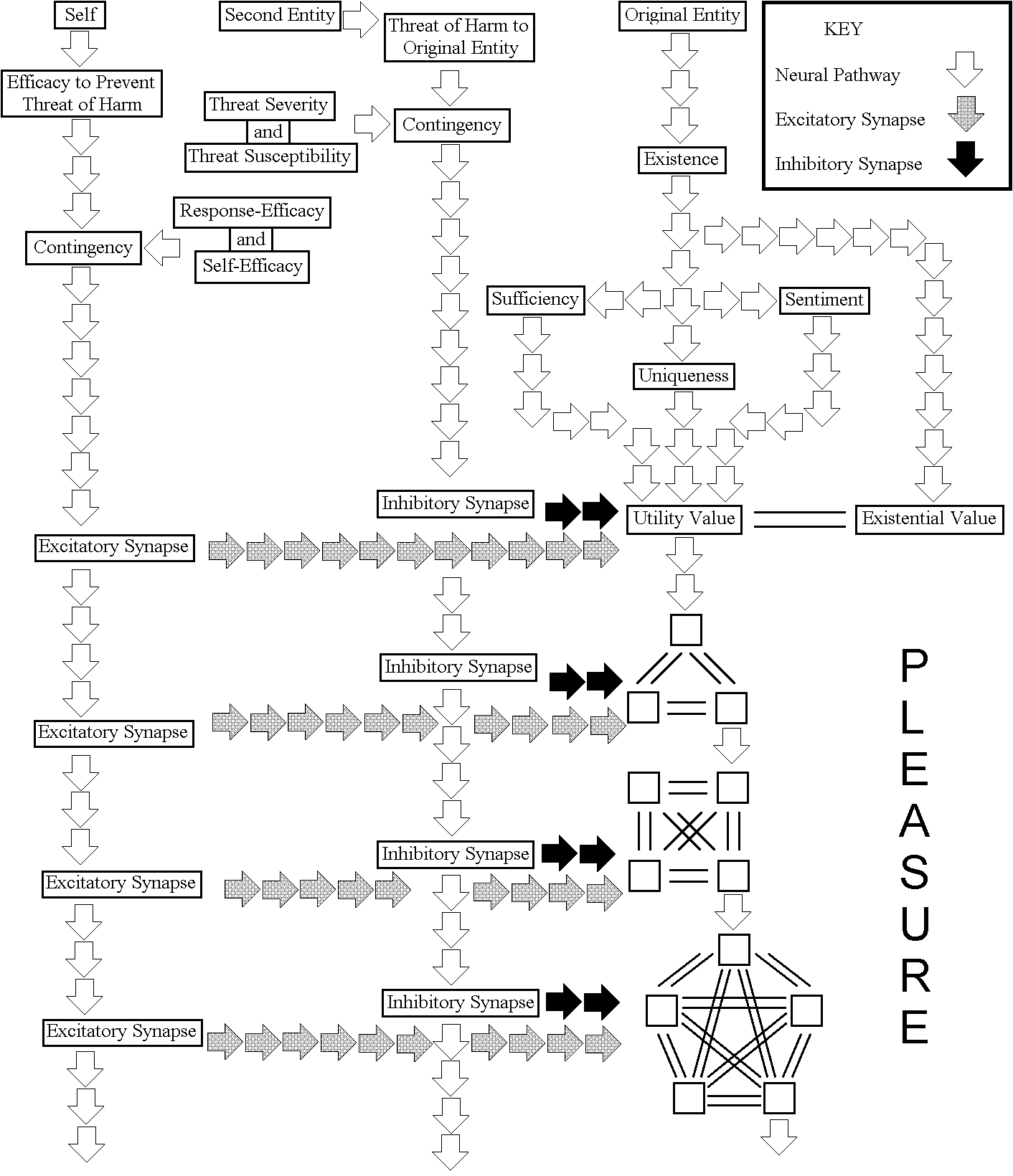Below are two of the simpler sample models used throughout my book for how the variables in the equations may lead to the arousal of pain or pleasure. The models below do not include Reasoning or Attention, but can do so with extensions. Similarly, the samples below only model Category One Emotions, but can be extended to model Category Two and Category Three Emotions where vicarious valuations and empathy come into play.
Given that valuations are modeled to grow or decrease exponentially from base 2, the valuing neurons can alternatively be modeled to grow exponentially, with each neuron or neural group (i.e., representatives of Emotional Units) in a higher, smaller group branching off to two more neurons or neural groups in a lower, larger group. The first tier would have 2, the second tier 4, the third tier 8, the fourth tier 16, the fifth tier 32, and so on.

Figure 8.6 from Affect Engineering: A Unified Field Theory of Emotion. The above depicts a sample neurological model for the Avoidance of Pain equation. This is a theoretical model for how an individual might organize positive valuations and the investment of anxiety. The contingencies used here are negative ones, more specifically, the threat of harm posed by the second entity to the original entity, and the efficacy of the self to prevent the second entity from harming the original entity. The valuing networked neurons in the bottom right correspond to anxiety (negative affect), and would likely be linked to an area of the brain concerned with danger, such as the amygdala.

Figure 8.12, from Affect Engineering: A Unified Field Theory of Emotion. The above depicts a sample neurological model for the Pursuit of Pleasure equation. This is a theoretical model for how an individual might organize negative valuations and the investment of negative anxiety. The contingencies used here are negative ones, more specifically, the threat of harm posed by the second entity to the original entity, and the efficacy of the self to prevent the second entity from harming the original entity. The valuing networked neurons in the bottom right correspond to negative anxiety (positive affect), and would likely be linked to areas of the brain that contribute to pleasure.



Pingback: Two Updates: Working Definition of Emotion and Sample Neurological Model – Affect Engineering